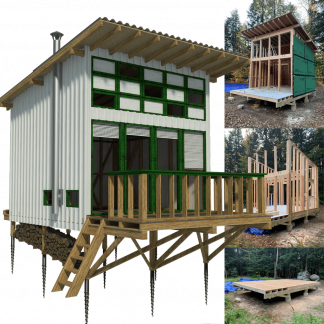
When you enter a completed commercial building, it’s hard not to look at the glass walls, shiny floors and nice clean lighting. It’s what you don’t see, the hundreds of hours poured into the electrical work behind those walls. Each wire, breaker and control system had to be designed and installed, then tested by human hands, people who understand all too well how fragile a huge construction project can be when power doesn’t flow in precisely the way it’s supposed to.
I’ve seen what happens when that foresight falters. One time, while working on a hotel project, the lights on an entire floor flickered for days because two systems were drawing from mismatched circuits. The contractor team worked nights fishing cables through ceilings to fix what could have been addressed during the design process. That’s what this article is all about, how to make sure each aspect of a commercial build receives the attention it deserves from beginning to end.
Explaining The Role Of An Electrical Contractor

There is more to an electrical contractor than just hooking up wires. They are at the helm of complex power systems keeping a construction project alive. Their work begins even before the installation of the first switchboard. From electrical design to final inspection, they ensure that every component meets safety standards, local compliance regulations and project goals.
Also on larger projects, the contractor collaborates with architects, engineers and others to design and fit the electrical system into the building’s infrastructure. That involves matching installation plans to HVAC layouts, IT systems and renewable sources of power such as solar arrays or EV charging. With a strong team behind you, that becomes less of an issue and the chances are more will get done with less delay and no expensive rework later on.
Pre-Construction Planning and Design

Hope this helps and remember, planning is everything way before the first conduit gets laid. The electrician reviews blueprints, load requirements and equipment specifications. It is right here that electrical components such as transformers, switchgear and panels are selected to hold the line with project timeline and post-installation maintenance schedules.
Early planning also reduces the amount of time that construction interferes with business. For one factory where I worked, inefficiencies in arrangement meant that the team had to shift cumbersome cables twice. Not only was it a waste of time, it threw off the entire timeline and stretched our budget. Good planning makes that avoidable.
A specific electrical design provides circuit, feeder and wire sizing before work ever begins in the field. With today’s software, plans can be fine-tuned on the fly to eliminate surprises when it comes time for installation.
Installation and Field Operations

Here’s where experience counts. When installed, the contractor positions them where the drawings require, high-voltage systems with their conduits and control panels. Field crews stretch miles of cable, install junction boxes and mount fixtures, all frequently under tight deadlines and moving conditions.
Safety is always paramount when the electrical system is constructed. Not optional, basic safety protocols and lockout procedures. As the Electrical Safety Foundation notes, a large share of construction injuries come from failing to identify utility lines or neglecting ground fault protection. One wrong move with high-voltage wiring can spell disaster at best, death at worst. The best enterprisers organize regular checks and team briefings to keep up safety and reliability.
Local Expertise and Regional Challenges

Every city has its quirks. Add in the unique challenges of electrical contracting in Texas, where extreme heat and demanding building codes can make for perilous conditions. And this is where local knowledge matters most.
For example, commercial electrical services in Dallas are an essential part of the more complex work required by power distribution systems that need to support both heavy industrial loads and smart automation. Local professionals know these local codes, utility mandates, and even what kind of weather puts wear on outdoor circuits. They know when to use higher insulation ratings or specify conduits that can withstand heat on a rooftop. That expertise also saves weeks of downtime and costly (or worse) discoveries later.
Quality, Testing, and Compliance

Once all the connections are made, it’s time for testing. An adequate examination verifies the proper operation of the system. Every part of the installation process is recorded by electricity installers and verified as meeting standards both locally and nationally.
Testing also validates the power distribution network is symmetrical, breakers open correctly and no hazard exists prior to energizing circuits. A robust quality program doesn’t just protect the workers, it protects the owner’s investment. And it’s not optional: many jurisdictions require that all commercial electrical work carry a permit and be subject to formal inspection. (See Washington State’s guidance on required permits and inspections.) I’ve got one project in mind where if a neutral was missed, it could have blown up the whole lighting control system. We are fortunate the inspection caught it early.
Project Management and Coordination

Coordination is a necessary part of the large-scale build. Today, project management software allows teams to track statuses in real-time by assigning tasks, logging reports and forecasting material needs before any shortages happen. These tools lead to better communication between the roofer, general contractor and all other trades.
Good project management reduces delay by coordinating sequencing of work between framing, electrical and mechanical. When executed correctly, the effect is smooth, almost imperceptible to the outer eye. But inside, it is a juggle of schedules, permits and hundreds of moving parts.
Safety, Maintenance, and Long-Term Reliability
It does not finish when the lights finally come on. We know how important dependability is to your operation and unplanned outages are never ideal. A good electrical contractor will ensure the client has a service plan in place, which includes regular checks and inspections, thermal imaging, as well as system recalibration.
Buildings are dynamic, tenants come and go, renewable energy systems like rooftop solar or battery storage pieces get added down the line. A modular design and regular check-ups keep the electrical system running stably for years. It may not be glamorous, but it’s what keeps each and every outlet, switch and back-up generator up and running when you need it the most.
Invention, Recasement and Change in the Future of Commercial Power

We’re in a shift right now. With the rise of renewable energy, work is also increasing with microgrids, smart meters and building automation. Nowadays, contractors have to keep up as well with grid integration, data-driven diagnostics and energy-efficient retrofits.
And the sensors of today’s era allow teams to see faults as they happen, boosting workflow and slashing downtime before it turns into a problem. It is an exciting time to work in this sector because the future of construction intersects so greatly with the future of energy itself.
Why This Work Matters
Power is required for any kind of construction. No building, no matter how lovely, is more than a shell without safe and dependable electricity. An electrical contractor doesn’t just wire systems, they wire opportunity. They help keep offices bright, machines running and systems safe.
Big projects work through coordination, planning and care. When projects respect every step, from design through installation to inspection, they protect not only schedules and budgets but human life.
That’s why it is important to select the contractor carefully. The best ones don’t merely get the job done, they make sure the lights come on, stay on and keep an entire building breathing for decades.








